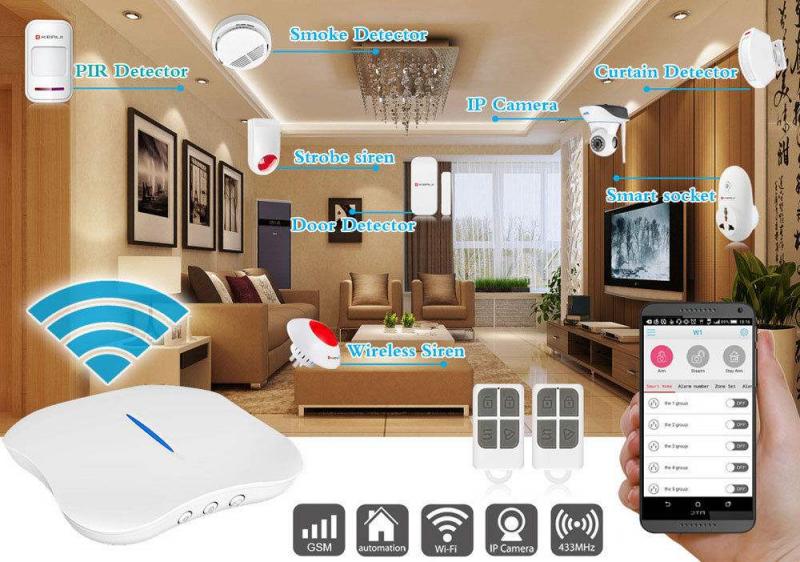Will OLED screen be a new trend for iPhone?
A key element for a great smartphone has always been a truly innovative and top performing display, and the best leading edge smartphones have always flaunted their beautiful high tech displays. Apple iPhones have played in the leading role in mobile display. They were early adopters of high performance IPS LCDs which dramatically improve the image and picture quality as well as display performance. Actually, according to some researches and reports, it is said that the organic light-emitting diode (OLED) displays will replace liquid crystal display (LCD) screens as the leading smartphone display technology in 2020. What on earth will OLED screen be a future trend for smart devices?
Here is the evolution of iPhone screen replacement. The most aggressive innovation came with the introduction of the Retina display in 2010 for the iPhone 4, where Apple doubled the pixel resolution and pixels per inch up to where the screen appeared perfectly sharp for normal 20 / 20 vision at typical smartphone viewing distances of 10.5 inches or more. It was a brilliant technical and marketing innovation. But then iPhone display innovation slowed almost to a crawl: in 2011 the iPhone 4s display remained the same (mid-cycle refresh). In 2012 with the iPhone 5, the new display enhancements were increasing the Color Gamut up to 100 percent sRGB and bumping up the display size from 3.5 to 4.0 inches. While in 2014, It's nice to see Apple once again significantly enhancing the displays for their iPhone 6 and 6 Plus. But there are now four years of catching up to do, and there are many more display issues in addition to screen size, which is the simplest one that has gotten the most attention. We'll examine how the new iPhone displays compare to their competition, which includes other full HD LCD smartphones and the OLED Samsung Galaxy S5, plus we just finished testing the Galaxy Note 4 and Note Edge, which have the latest OLED displays.
The advantages of LCD: Higher peak brightness with high average picture levels, no peak brightness variation with average picture level, wide Color Gamuts with Quantum Dots, smaller color shifts with Viewing Angle, higher power efficiency with high average picture levels, and much higher worldwide market share. In contrast, the OLED screen possess several features. Higher Peak Brightness with lower average picture levels, easier to increase screen resolution and ppi, perfect blacks and infinite contrast ratios, wide Color Gamuts, smaller brightness shifts with viewing angle, better screen uniformity, faster response times and no display motion blur, higher power efficiency with lower average picture levels. With the rapidly development of display technology, things can change again in the next new version of cellphone.
The best performing LCD and OLED displays are now delivering impressive sharpness, brightness, low reflectance, high color accuracy, accurate image contrast, and great viewing angles. So what comes next? Essentially all published display specifications and factory calibrations are based on performance in absolute darkness 0 lux, but mobile displays (and even TVs) are seldom viewed in the dark. Even low levels of ambient light significantly affect the image and picture quality. The most important improvements for both LCD and LCD mobile displays will come from improving their image and picture quality and screen readability in ambient light, which washes out the screen images, resulting in reduced image contrast, color saturation, and color accuracy. The key will be in implementing automatic real-time modification of the display's Color Gamut and Intensity Scales.
In the current market, Samsung has already adopted OLED displays in its flagship smartphones, such as the Galaxy S7. In addition, there is an increasing demand for OLED displays from Chinese vendors Huawei, OPPO, Vivo, Meizu and others. Apple is expected to switch to OLED displays for the iPhone 8. A senior director say” Apple’s upcoming adoption of OLED displays will be a milestone for OLED in the display industry. As we all know, LCD screens have dominated mobile phone displays for more than 15 years, but OLED displays are flexible, thinner and more power efficient. iPhone 5 screen features the beautiful 4 inch Retina display. With a pixel density of 326 PPI and over 16 million colors. Some reliable retailers offer iPhone 5 screen replacement which go through rigorous QC testing to ensure customers to receiver the high-premium quality screen part.
In analysis, OLED displays are not only thinner and lighter than LCD displays. But they also boast better color performance and enable flexible display form factors that lead more innovative design. Whether you choose the LCD screen replacement or OLED one, it depends on you. Here, an example for you. The iPhone 5 lcd screen digitizer replacement including a set of professional kit for you. If your smart phone is cracked, will you choose the newest screen replacement or the current LCD screen, it’s a tough question.
